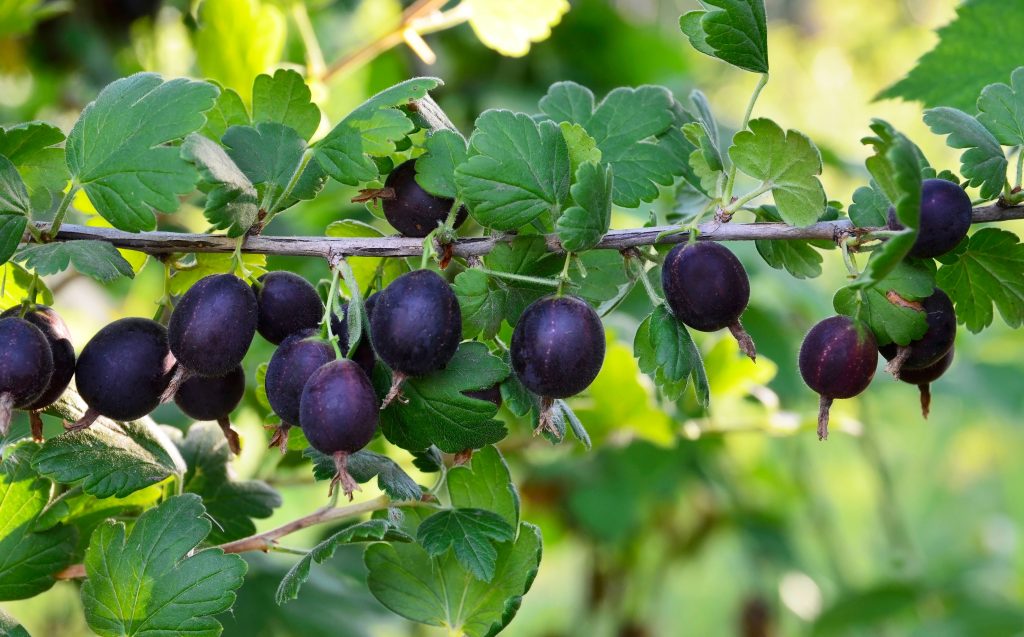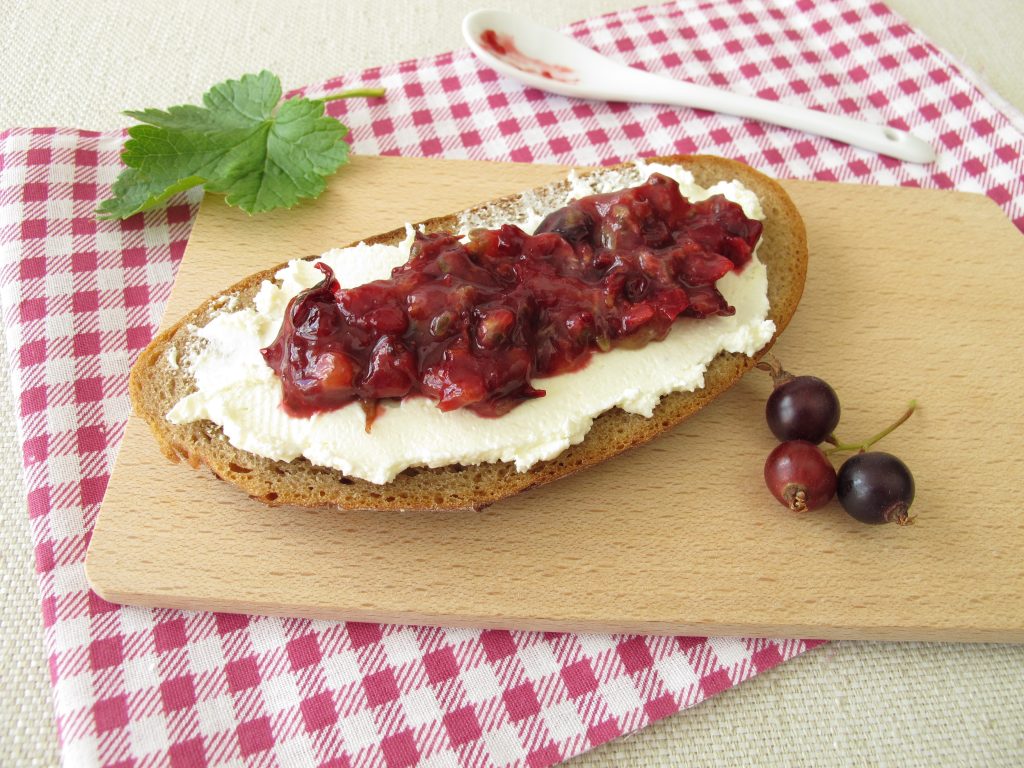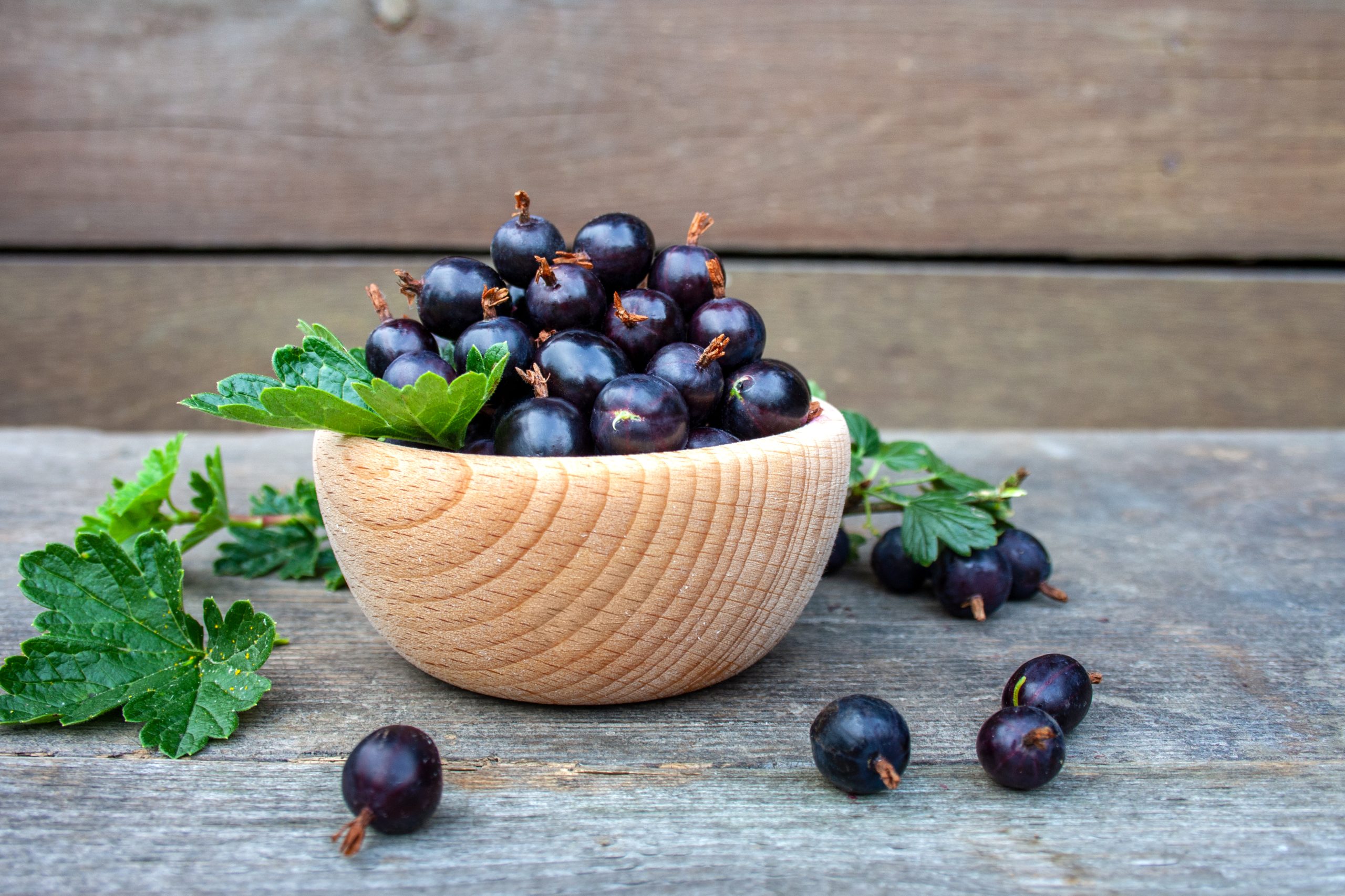Jostaberries are a relatively new fruit created in Germany in the 1970s through the crossing of black currants and gooseberries. The fruit is a deep reddish-purple color with a sweet-tart flavor and a slightly floral aroma.
Table of Contents
What is a Jostaberry?
A Jostaberry is a type of fruit that is a cross between a blackcurrant and a gooseberry. It is also known as Ribes × nidigrolaria. The name “Jostaberry” is derived from the combination of the German word for blackcurrant (Johannisbeere) and the botanical name for gooseberry (Ribes uva-crispa).
They come from jostaberry bushes that grow in temperature, or even cold, climates (in partial shade rather than full sun) and are self-fertile after insect pollination.
Jostaberries were first created in Germany in the 1950s by plant breeder Rudolf Bauer. The fruit is now grown in various parts of Europe and North America, including Germany, Switzerland, Canada, and the United States.
The fruit is generally small and round, measuring about 1-2 cm (0.4-0.8 in) in diameter. They are usually a dark purplish-black color when ripe, although some varieties may be lighter. The berries have smooth, slightly glossy skin and tiny, delicate hairs on the surface. The flesh is juicy and contains tiny, edible seeds.
Jostaberries are sweet and tangy, with a slightly tart taste reminiscent of blackcurrants and gooseberries. They are often described as having a complex flavor profile, with notes of sweetness, tartness, and a somewhat floral or earthy undertone.
‘Josta’ was the first jostaberry cultivar made available to the public. Later, two other jostaberry cultivars, ‘Jostine’ and ‘Jogranda’’ were released. Lastly, some jostaberries were developed independently by the Oregon USDA Agricultural Research Service unit.
The History of Jostaberries
In the late 18th and early 19th centuries, a gooseberry obsession swept across England and America. People couldn’t get enough of these delicious berries, and appreciation clubs were formed to celebrate them. Gooseberries were first cultivated in English and Dutch gardens and brought to America by English colonists, where they became almost as famous as they were in England.
Gardeners and breeders in Europe began experimenting by crossing gooseberries with other berries, including the black currant. And voila! The Jostaberry was born.
The jostaberry plant was developed by Dr. Rudolph Bauer in Cologne, Germany, and introduced to the public in 1977. Today, jostaberries can be found in Europe, Australia, and North America.

What Does a Jostaberry Taste Like?
When eaten raw, jostaberries have a firm texture and a juicy pulp. The flavor is initially sweet, followed by a tangy tartness that can be strong, depending on the ripeness of the fruit. The musky undertone adds a unique flavor that is difficult to describe but is quite pleasant.
When cooked, jostaberries soften and release their juices, making them perfect for use in jams, jellies, and desserts. The sweetness becomes more pronounced, and adding sugar balances the tartness.
How to Tell When Jostaberry is Ripe
Here are some characteristics to look for when determining if a Jostaberry is ripe:
| Color | A ripe Jostaberry is a uniformly dark blue-black color. |
| Texture | The fruit should be firm to the touch but not hard. It should give slightly when you press it. |
| Size | A ripe Jostaberry is about the size of a small grape or blueberry. |
| Scent | A Jostaberry should ideally have a sweet aroma (not too moldy, not too neutral) |
| Taste | A ripe Jostaberry has a sweet-tart flavor. |
Note: If you’re unsure about the ripeness of the Jostaberries, you can always ask a produce manager or farmer at a local market for their advice.
Can I Eat Raw Jostaberries?
Yes, you can eat this fruit in its raw form. Here are a few ideas for how you can use raw jostaberries:
- Snack on them – Jostaberries are a great snack on their own. Rinse them off and eat them like grapes or other small berries.
- Add them to a fruit salad – Jostaberries are a great addition to fruit salads. Combine them with other fruits like strawberries, blueberries, and peaches for a delicious and healthy treat.
- Make a smoothie – Blend jostaberries with other fruits and some yogurt or milk for a refreshing and healthy smoothie.
- Top your oatmeal or yogurt – Sprinkle some raw jostaberries on top of your morning oatmeal or yogurt for a delicious and nutritious breakfast.
Cooking with Jostaberries
Jostaberries are versatile and can be used in many different dishes, including jams, jellies, pies, and sauces. Jostaberries can be found in German, Scandinavian, and British cuisine.

Here are a few fantastic jostaberry recipes:
Jostaberry Liqueur: This is the perfect way to cap off a long day or add a bit of uniqueness to your next cocktail hour. Plus, the deep purple hue of the liqueur is so gorgeous that you’ll feel like a mixologist extraordinaire as you sip it.
Jostaberry Blueberry Jam: The ideal blend of sweet and tart, with the Jostaberries lending their unique flavor to the classic blueberry taste. Slather it on a slice of toast or pair it with a cheese platter for a truly delicious experience.
Jostaberry Chutney: This chutney perfectly accompanies any charcuterie board or cheese plate. The tanginess of the Jostaberries pairs beautifully with the plums’ sweetness and the chutney’s spiciness.
Jostaberry Crumb Muffins: These muffins are the epitome of comfort food. The crumbly buttery topping paired with the sweet and tangy Jostaberry filling is perfect for breakfast, brunch, or a mid-day snack.
How to Store Jostaberries
Jostaberries can be stored on the counter for up to 2-3 days, but there are better storage methods than this since they can over-ripen quickly. Instead, you can store them in the refrigerator for a few days and up to 2 weeks. If stored this way, place them in a breathable container, such as a paper bag or a plastic container with holes, to help prevent moisture buildup.
Lastly, you can also freeze jostaberries for a 6-months storage period. Here’s how to do it: rinse and pat them dry, then spread them out in a single layer on a baking sheet and freeze until solid. Once frozen, transfer them to a freezer-safe bag or container.
Nutritional Benefits of Jostaberries
Besides being a delicious addition to pies and cakes, Jostaberry has numerous health benefits.
One of the primary advantages of consuming Jostaberry is its high Vitamin C content, which can help prevent serious heart problems such as atherosclerosis and improve circulation. Vitamin C also aids in maintaining good eyesight and preventing cataracts, fights premature skin aging caused by sun exposure, and helps reduce cholesterol levels and blood pressure.
Additionally, Jostaberry boosts our immune system, protecting our body from infections and helping to heal wounds faster.
Some research has shown that Jostaberry extracts and juice can prevent the growth of certain fungi and bacteria, including E. coli. This means that Jostaberry may have properties that can help fight off infections caused by these microorganisms.
Where to Purchase Jostaberries
Jostaberries can often be found at specialty fruit markets, farmer’s markets, and some grocery stores during their peak season, typically from June to August. They may also be available for purchase online from specialty fruit suppliers.

